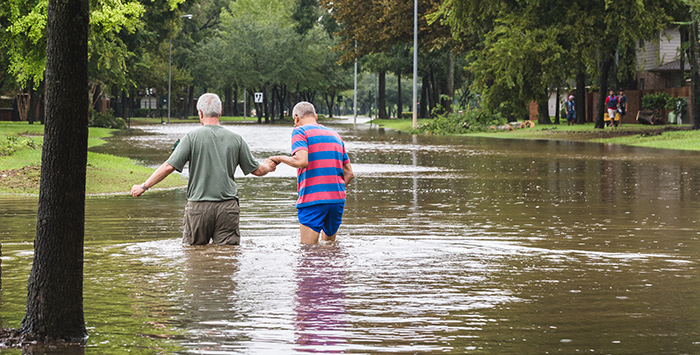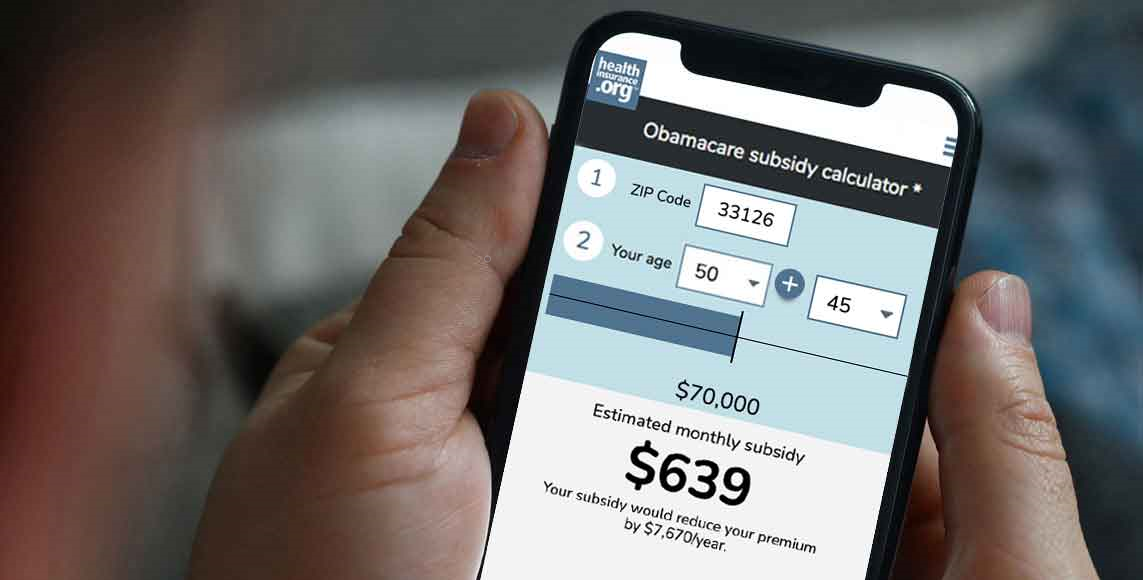
Key takeaways
- Exceptional circumstances – personal or widespread – can trigger an SEP.
- In some state-run exchanges, pregnancy can trigger an SEP.
- Domestic violence or spousal abandonment
- Enrollment errors or delays
- Contract violations (changes to the provider network or drug formulary are NOT considered contract violations)
In addition to the list of specific qualifying events that trigger special enrollment periods, various other circumstances will allow you to enroll in a health insurance plan through the exchange after open enrollment has ended for the year.
These are all case-by-case situations that will vary by location and year, and they all apply on-exchange — although insurers can allow for off-exchange enrollment flexibility for these situations too.
Exceptional circumstances, including natural disasters
“Exceptional circumstances” can be personal – for example, a house fire or a serious medical condition that made it impossible for you to enroll – but they also include natural disasters that impact a large number of people. They can also be triggered by political or regulatory changes, or to address a specific issue that has caused people to have difficulties with their health coverage (for example, HealthCare.gov and several state-run exchanges offered a special enrollment period in 2022 for people who had been misled by Benefytt Technologies and unknowingly purchased junk health insurance).
If exceptional circumstances occur during open enrollment and you can demonstrate to the exchange that the circumstances prevented you from enrolling by the end of open enrollment, the exchange can grant you a special enrollment period. This also applies if the exceptional circumstance happened before or during another special enrollment period for which you were eligible, and it essentially extends your special enrollment period.
HHS guidance on SEPs when FEMA declares a disaster
HHS issued guidance in 2018 explaining how special enrollment periods work via HealthCare.gov in areas where FEMA declares a disaster that allows a county to apply for “individual assistance” or “public assistance” as a result of the disaster.
The special enrollment period continues for 60 days after the FEMA disaster incident period ends, and applicants can select an effective date in the future or the effective date they would have had if they’d enrolled during the open enrollment period (ie, a January 1 effective date).
To be eligible for this special enrollment period, you have to contact HealthCare.gov (800-318-2596 or TTY at 855-889-4325) and attest to the fact that a FEMA-declared disaster prevented you from enrolling in a health plan during the open enrollment period (or a special enrollment period that you were eligible for due to a qualifying event). These special enrollment period requests are evaluated on a case-by-case basis, and you may be asked to provide various documentation to clarify how the disaster impacted your ability to enroll in coverage.
(Note that these specific rules only apply in states that use HealthCare.gov. States that run their own exchanges can set their own rules.)
An incident period outside of OEP or other SEP does not result in a new SEP (Hurricanes Ian and Helene are examples)
FEMA-declared disasters that happen during open enrollment (or a person’s special enrollment period triggered by a separate qualifying event) will result in an extended enrollment opportunity. But a disaster that happens outside of a normal enrollment window will not trigger any sort of widespread special enrollment period.
To give an example of how this works, consider Hurricane Ian, which caused extensive damage in Florida in 2022. Ian was a devastating storm, but it struck in September, well before the annual open enrollment period (which runs from November 1 to January 15 in most states, including Florida). This means it did not create a widespread special enrollment period for health coverage.
Residents in affected areas only became eligible for a storm-related special enrollment period if they had already qualified for a special enrollment period — due to some other qualifying event — that was ongoing during the hurricane, and were unable, because of the hurricane, to complete their enrollment by the end of that SEP. People in that situation would have the aforementioned 60-day window after the end of a FEMA-declared disaster incident.
So for example, let’s say you live in Fort Myers, Florida and got married on August 25, 2022, creating a 60-day window to add your new spouse to your health plan. You were just about to do that when Hurricane Ian struck, but the hurricane knocked out your power and flooded your house, making it impossible for you to complete the enrollment. The disaster declaration would have given you an extra 60 days after the disaster incident period ended, during which you could add your new spouse to your health plan. But if you didn’t have an ongoing special enrollment period during the Hurricane Ian incident period, you wouldn’t be eligible for a special enrollment period due to the storm.
Hurricane Helene in 2024 is another similar example. This hurricane also struck in September, and FEMA declared disasters in several southeastern states as a result. The disaster declarations began the last week in September 2024 (specific dates vary by region) and were ongoing as of the end of September. Once an end date is established for the Helene-related disaster incidents, special enrollment periods will continue for 60 days after that date, for people who are eligible for them.
But again, a special enrollment period for Marketplace coverage due to Hurricane Helene will only be available as an extension to an existing special enrollment period triggered by an individual’s qualifying life event. If you don’t have an ongoing special enrollment period during the Hurricane Helene incident period, you won’t be eligible for a special enrollment period due to the storm. Instead, you’ll be able to enroll or change plans during the regular open enrollment period, which runs from November 1 to January 15 in most states.
Where the disaster/emergency-related SEP applies
The disaster/emergency-related special enrollment period on HealthCare.gov applies to people living in areas deemed eligible for public assistance or individual assistance. The applicant has to attest that they were affected by the emergency or disaster and it prevented them from enrolling during the regular open enrollment period or the other special enrollment period for which the person was eligible.
For example, if you lose your employer-sponsored health insurance and qualify for a SEP but then a tornado hits your town and you’re unable to enroll during your SEP, you’ll have another SEP that continues for 60 days after the tornado, assuming your area qualifies for FEMA assistance.
The applicant can choose to use regular effective date rules (that typically means an effective date of the first of the month following enrollment), but they also have the option to get a retroactive effective date that would have been available if they had enrolled during the regular open enrollment period or their initial special enrollment period (as long as that application date would have been after the FEMA-declared incident began). Table 1 in the federal guidance shows some example scenarios of possible effective dates when people experience a FEMA-declared disaster during another special enrollment period or during the annual open enrollment period.
States that run their own exchanges can create their own disaster/emergency-related special enrollment periods.
(If you’re uncertain about your eligibility for a special enrollment period, call (866) 553-3223 to discuss your situation with a licensed insurance professional.)
Does pregnancy trigger a special enrollment period?
In most states, no, pregnancy does not trigger a special enrollment period. HHS considered that possibility, but clarified in 2015 that they had opted not to include pregnancy as a qualifying event (the birth of the baby is a qualifying event in every state, but that special enrollment period doesn’t begin until the baby is born, meaning that the new health plan will not cover costs related to the pregnancy).
However, state-run exchanges (there are 19 of them as of 2024) can set their own rules for qualifying events and special enrollment periods. And some state-run exchanges have chosen to allow a special enrollment period triggered by pregnancy. This lets the pregnant person enroll in health coverage and have better access to prenatal care as well as coverage for labor and delivery costs (in general this special enrollment period applies to people who don’t already have coverage, as opposed to an opportunity to change plans, but the specific rules vary from one state to another).
Pregnancy is a qualifying event in the following state-run exchanges:
Illinois enacted legislation in 2024 that will create a special enrollment period triggered by pregnancy starting in 2026, once Illinois is running its own Marketplace platform.1
Several pieces of legislation were introduced in 2024 in Kentucky that would have created a special enrollment period triggered by pregnancy, but none of them were successful.2
Legislation was previously considered in 2023 in Kentucky (H.B.286) and in Massachusetts (H.1052) to create a special enrollment period triggered by pregnancy, but neither bill was successful during the 2023 legislative session.
Domestic violence or spousal abandonment
Victims of domestic violence or spousal abandonment are eligible to enroll in a plan on their own (or with their children), separate from the partner who abused and/or abandoned them. This is true regardless of whether the abuse or abandonment happens outside of open enrollment
Under normal circumstances, married enrollees are only eligible for subsidies in the exchange if they file a joint tax return, and their exchange enrollment must include total household income. But there’s an exception for victims of domestic violence or spousal abandonment. In those circumstances, the victim can state that he or she is unmarried on the exchange application, and eligibility for premium subsidies and cost-sharing subsidies will be calculated based on the enrollee’s income alone.
Enrollment errors and delays
There are a variety of errors and delays that could occur during the regular open enrollment period. To provide flexibility for the exchanges to deal with these issues, HHS included them in the category of qualifying events:
- Your enrollment – or lack thereof – was the result of an error, misrepresentation, misconduct, or inaction on the part of the exchange, one of its representatives, or an enrollment assister. It’s a good idea to keep notes with details about the steps you take to enroll during open enrollment, so that you have documentation if you need to show that errors occurred. This sort of scenario doesn’t happen too often now that the exchanges have had several years to work out most of their bugs. But mistakes can still happen, and a special enrollment period to sort out the problems is an important safeguard.
- Your eligibility determination (for Medicaid/CHIP, premium subsidies, and/or cost-sharing subsidies) or coverage effective date was incorrect, and you filed a successful appeal with the exchange. If the appeal process finds that the initial eligibility determination and/or effective date were incorrect, you’ll have an opportunity to enroll again with the correct information, even if open enrollment has ended by that point.
- A technical error occurred during your enrollment, or the plan information was incorrectly displayed on the exchange website.
- You’re a recent immigrant (not eligible for Medicaid) with a household income under 100% of the poverty level, and you didn’t enroll in coverage while waiting for the exchange to determine your eligibility for subsidies in the exchange. Once the determination is made, you have access to a special enrollment period (this was clarified in the 2018 Benefit and Payment Parameters, page 247)
- You applied for Medicaid or CHIP during open enrollment, and although you were deemed ineligible, the determination wasn’t made until after open enrollment ended. Medicaid and CHIP enrollment continues year-round, but exchange enrollees who are applying for subsidized qualified health plans (QHPs) must first be screened to ensure that they aren’t eligible for Medicaid or CHIP.Once the state Medicaid/CHIP agency has determined that an applicant is ineligible, the exchange can enroll the applicant in a subsidized QHP. But if the ineligibility determination for Medicaid/CHIP isn’t made until after open enrollment ends (even though the applicant initiated the process during open enrollment), the exchange can grant a special enrollment period during which the applicant can select a QHP and finish the enrollment process.This SEP applies regardless of whether the initial application for Medicaid/CHIP was initiated through the exchange or directly through the state’s Medicaid office, as long as it was submitted during the annual open enrollment period. But if you’re applying during a special enrollment period, you must apply through the marketplace during your special enrollment period (as opposed to directly through your state’s Medicaid office), to continue to have extra time to enroll if your application is subsequently routed to Medicaid and you’re found ineligible for Medicaid after the SEP window has closed (see question 16 in this FAQ series).It’s important to clarify that if you apply for Medicaid outside of the Marketplace open enrollment period and you’re found to be ineligible for Medicaid, you will not have a special enrollment period for a Marketplace plan at that point. Medicaid applications can be submitted year-round, but that’s not true for private Marketplace plans. You can’t get around that rule by starting with a Medicaid application mid-year.
Contract violations
The QHP in which you’re enrolled “substantially violated a material provision of its contract” with you. “Substantial violations” have to be investigated, and there’s an official process for this.
It’s important to note that things like formulary changes and network changes can happen mid-year and do not constitute substantial violations. But if you think that your health plan has substantially violated its contract, you can contact the exchange and/or the state Department of Insurance for instructions on how to proceed.
Louise Norris is an individual health insurance broker who has been writing about health insurance and health reform since 2006. She has written dozens of opinions and educational pieces about the Affordable Care Act for healthinsurance.org.
Footnotes
- ”Illinois SB3130” BillTrack50. Enacted Aug. 2, 2024. ⤶
- ”Kentucky SB34, Kentucky HB10, Kentucky HB734, Kentucky HB380, and Kentucky HB700” BillTrack50. Accessed February 27, 2024. ⤶

Get your free quote now through licensed agency partners!







